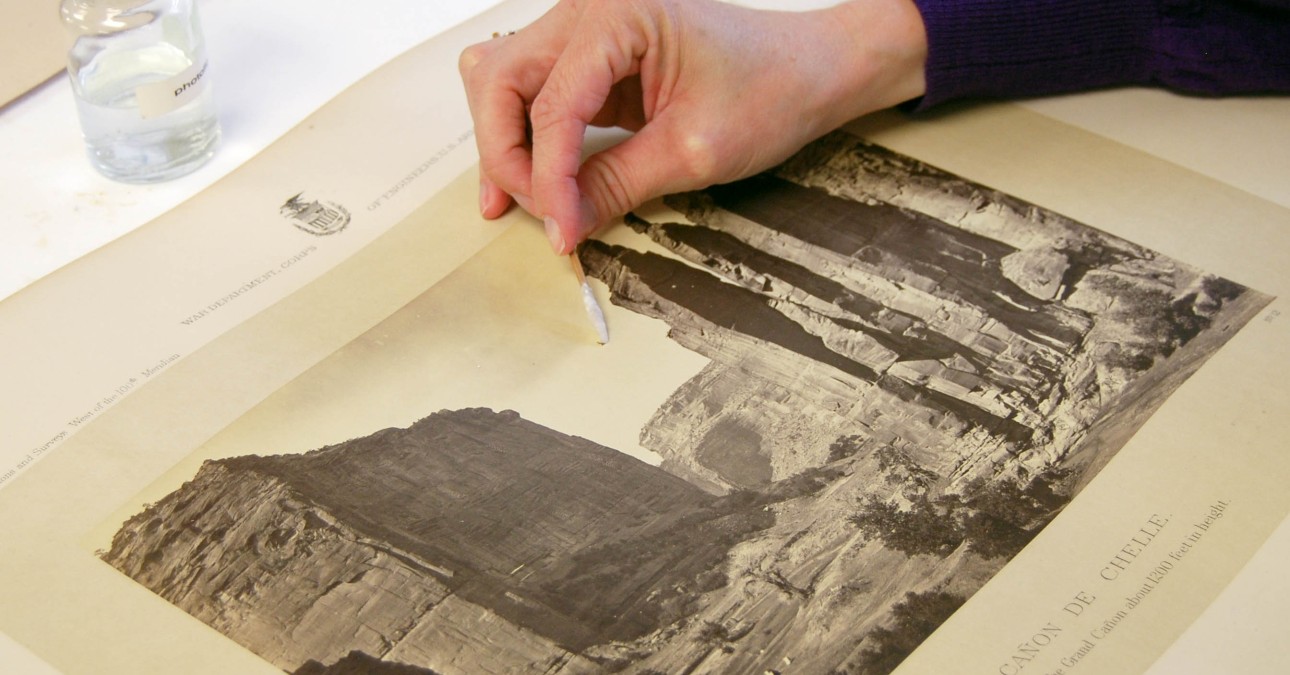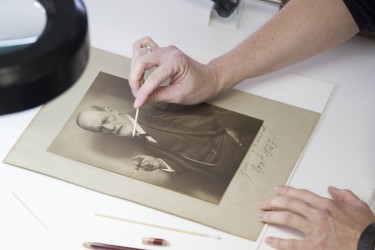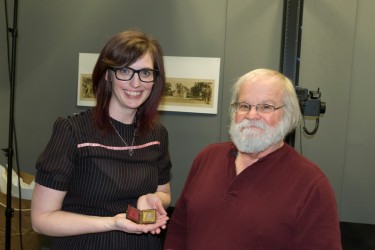
Photograph Conservation
Art and science
Our photograph conservators have extensive scientific and practical training. They understand how photographs are created, how they age, and how they can be treated. Their treatments clean and stabilize photographs, from early photographic plates to negatives to recent photographic prints.
We've participated in photographic preservation education initiatives. We've treated mugshot books from Eastern State Penitentiary. We're contributing to the field by leading NEH-funded research projects.
We’ve treated:
- daguerreotypes, ambrotypes, tintypes, and other cased photographs
- color photographs
- crayon/charcoal enlargements
- silver-gelatin photographs, albumen prints, blueprints, and salted paper prints
- photographic panoramas
- photograph albums and scrapbooks
- film-based negatives and 35mm slides
- glass-plate negatives and lantern slides
Services include:
- surface cleaning
- washing
- stain reduction
- mold remediation
- inpainting and consolidation of media
- tape removal and adhesive reduction
- humidification and flattening
- repair of case components for cased photographs
- mending of paper, plastic, and glass supports
- removing damaging linings and mounts


